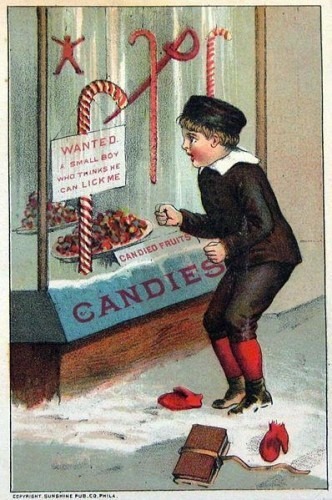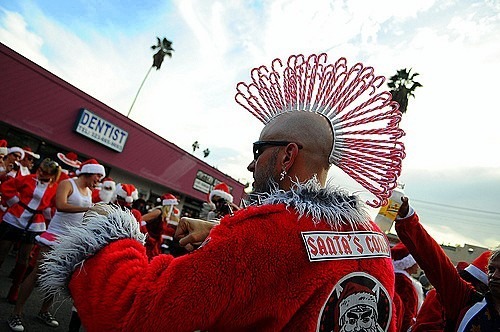It’s that time of year again, the holidays where we get together with others, share stories and feel the spirit of the season. What’s your favorite part of the holidays? Is it the Christmas tree, fully adorned with lights, tinsel and ornaments? Or is it the crackle of the fire and a warm cup of cider? For me, one of the best parts of the Christmas holiday is the candy cane. That glossy red and white swirl, the cool minty taste and the crunch you get when you finally bite into one.
I am a candy cane purist; I like the original mint flavor. Although you will see them today in a variety of colors and flavors, the mint is the original and still my favorite. New flavors such as bubble gum, strawberry and cherry were added to match the palettes of today’s children.
The candy cane dates back over 350 years when it was created by confectioners who wanted something their customers could adorn their Christmas trees with. The original candy cane was all white and flavored with peppermint. Some confectioners would decorate their candy canes with sugar roses to make them look even more inviting. It was until the 19th century that the candy cane received its familiar shape of a shepherd’s staff.
Around 1670 the choirmaster at the Cologne Cathedral had sticks of candy bent into the shape of a shepherd’s crook and passed them out to children who attended or performed in the traditional Christmas Eve Nativity scene reenactment / Christmas Eve Mass, probably in an attempt to keep the bored and ansty children quiet. This became a rather popular tradition with the practice of passing out the sugar canes at living creche ceremonies eventually spread throughout Europe.
The use of candy canes on Christmas trees made its way to America by the 1800’s, however during this time they were still pure white. They are represented this way on Christmas cards made before 1900, and it is not until the early 20th century that they appear with their familiar red stripes.
Here is a little fun fact about the candy cane that may or may not be true, but it certainly makes some sense. The red-and-white stripes on a candy can are said to represent Christ’s blood and purity. It is said that its shape is like the letter “J” in Jesus’ name. The three red stripes symbolize the Holy Trinity and the hardness of the candy cane represent the Church’s foundation on solid rock. The peppermint flavor is said to represent the use of hyssop, an herb referred to in the Old Testament. Whether this is all true or not, it certainly makes a good story on Christmas day.
Who first got the idea to make a striped candy cane? We may never know. It is still a mystery. Some folks say it was a candy maker named Bob McCormack in the 20s. McCormack had a company that would become one of the world’s largest peppermint candy cane producers by the late 1950s, selling about a half a million candy canes per day. Wow! Regardless of whether this is true or not one thing is for certain, this idea spread like wildfire and soon the red stripe on a candy cane was universal, as was peppermint flavoring. Some will say the peppermint was used to make the Christmas trees smell minty. (Doesn’t work too well today what with the food health inspection, food regulations, plastic wrappings and all. Bummer.) Or maybe they just did it for the flavor. Who knows?
Whether or not a Catholic priest (or choirmaster) had something to do with the birth of the candy cane, a certain Catholic priest can stake a claim to fame for of his association with the candy cane. Father Gregory Keller, brother-in-law of the aforementioned Bob McCormack, invented the Keller Machine which automatically puts the crook in the candy cane. Before the Keller Machine the cane had to be manually bent when it was still warm and soft as it came off the assembly line. This was super labor intensive and rather inconsistent. There was also a lot of waste, about 22% worth, when the candy cane broke during the bending process. The Keller Machine made it so the candy cane came out perfect nearly every time.
Regardless of where or how the candy cane was invented, the fact is you can find them in my house year ’round bringing smiles and Christmas cheer even in July.
What is your favorite flavor of candy cane? Which one makes you smile the most and brings back childhood memories? Click here to leave a comment and share your opinion and experience. Would love to hear from you.Maybe you know of a special flavor that we haven’t seen or heard of yet.
please share it with your friends using the Shareaholic buttons below.
Read [easyazon_link identifier=”0310730120″ locale=”US” tag=”1ksmiles-20″]The Legend of the Candy Cane: The Inspirational Story of Our Favorite Christmas Candy[/easyazon_link] from Amazon today!
[easyazon_image align=”center” height=”310″ identifier=”0310730120″ locale=”US” src=”https://www.1ksmiles.com/wp-content/uploads/2015/12/51svnPgmS1L.jpg” tag=”1ksmiles-20″ width=”375″]
[easyazon_cta align=”center” identifier=”0310730120″ key=”wide-orange” locale=”US” tag=”1ksmiles-20″]
[easyazon_image align=”center” height=”375″ identifier=”B00IEGNPTA” locale=”US” src=”https://www.1ksmiles.com/wp-content/uploads/2015/12/51H04dvKMwL.jpg” tag=”1ksmiles-20″ width=”375″]
[easyazon_cta align=”center” identifier=”B00IEGNPTA” key=”wide-orange” locale=”US” tag=”1ksmiles-20″]



